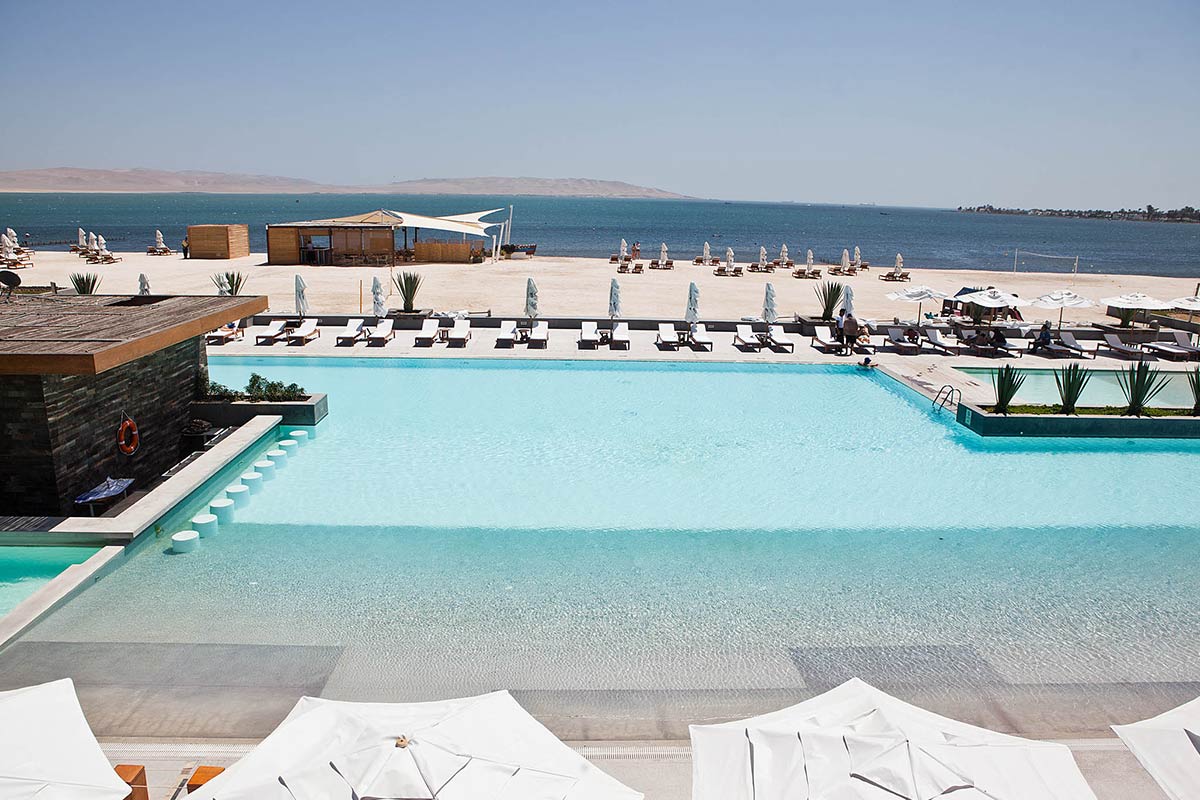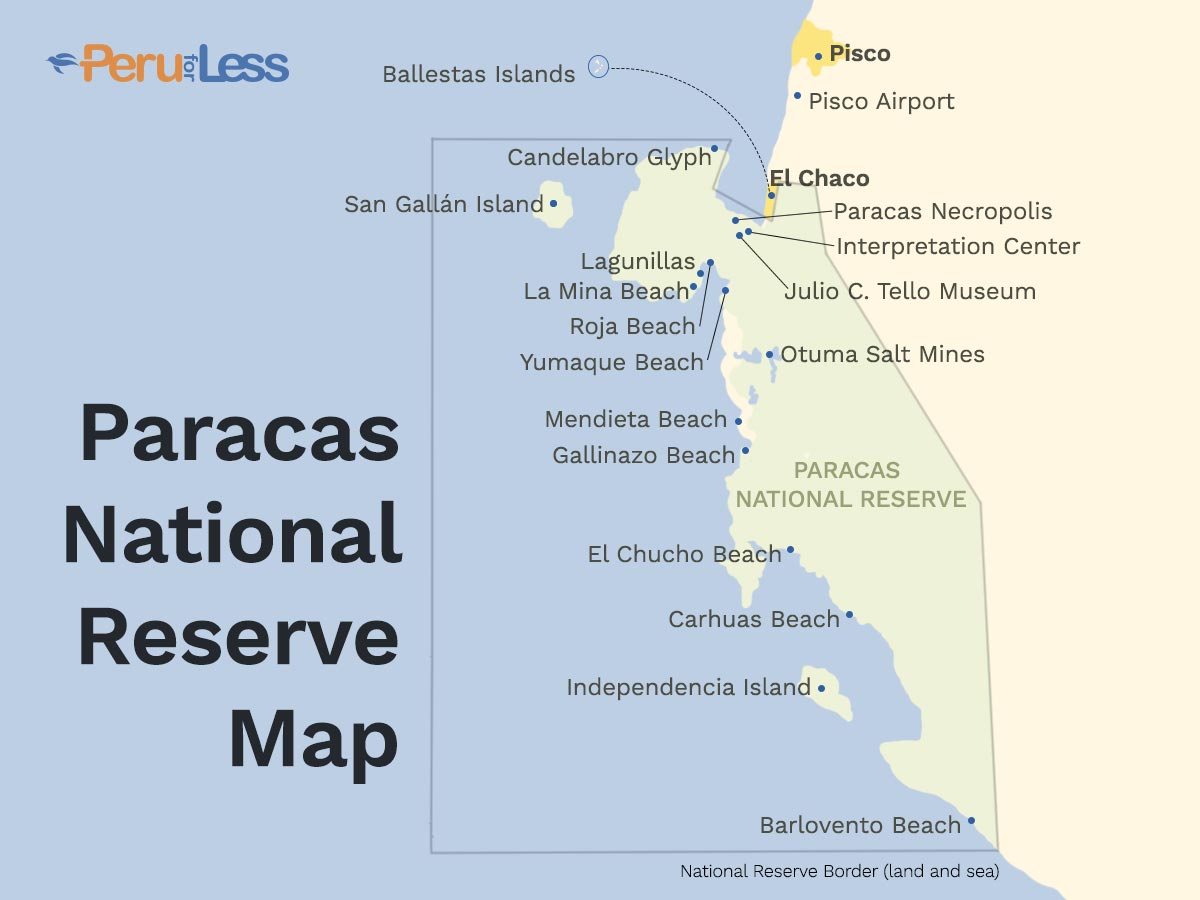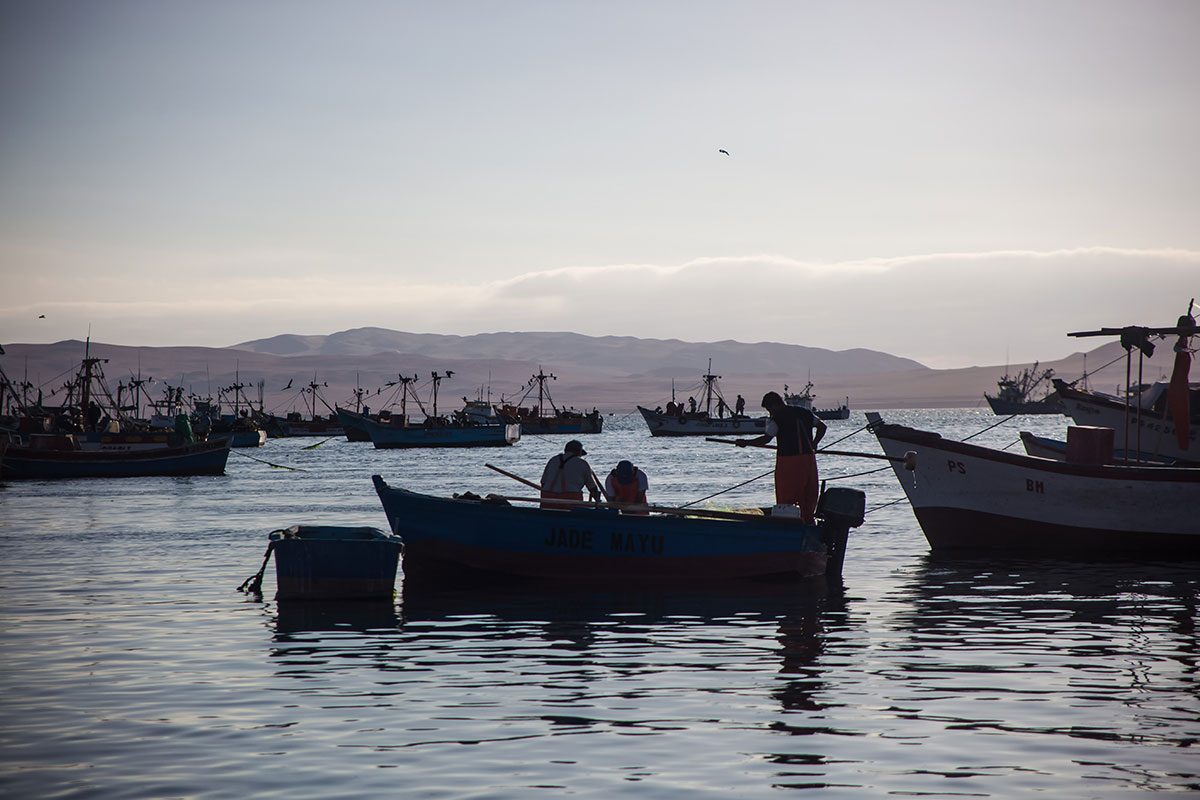Ballestas Islands + National Reserve Tour
The Ballestas Islands are one of the main attractions that draw visitors to Paracas. This small cluster of rocky islands is known to be one of the most dynamic and diverse homes for wildlife in the world, rivaling places such as the infamous Galapagos. The Ballestas Islands are part of a second reserve (separate from Paracas National Reserve) called the Reserva Nacional de las Islas, Islotes y Punta Guaneras.

Hundreds of seabirds are residents of the Ballestas Islands. Photo by Peru For Less.
If you want to see both national reserves, but your time in Paracas is limited, it’s possible to see highlights of the Ballestas and the Paracas Peninsula on the same day. Contact our team to arrange this Paracas tour in your custom travel package. Take a morning boat ride to the islands, passing El Candelabro along the way, and then explore sites of the Paracas National Reserve by car in the afternoon.
Dune Buggy & Sandboarding
Cruising down the dunes around Paracas is an exciting prospect for travelers who do not plan to visit Huacachina Oasis, Peru's capital for sandboarding an hour and thirty-minute drive from El Chaco. The desert coast of Peru gives way to pockets of expansive dunes that host fun opportunities to sandboard and complement wildlife excursions at the reserve.
Wander Through the Reserve
Dirt roads crisscross the Paracas Peninsula, leading to lookout points over the sea and remote beaches. Marked walking trails make it possible to explore limited areas on foot. However, first-timers get lost easily. Do prior research and have a good map, or consider hiring a guide. Fun alternatives to walking include reserving a Paracas National Reserve quad tour (i.e. ATV tour) or renting a bike for an independent day trip.

Roar across the Paracas desert on a quad. Photo by Peru For Less.
Camping
It’s popular to camp in Paracas National Reserve at beaches such as La Mina and Yamanque during the summer (December to March). There is limited access to food and water, so plan with sufficient supplies and bring all the necessary equipment. Some but far from all parts of the reserve have public restroom facilities. Many local campers come with their vehicles, set up their tents in the sand, and start grilling around dinnertime.
There is a lot of open space in Paracas National Reserve, and while it may be tempting to find a remote beach or dune to set up camp, it’s best to stick to parts where other campers are to avoid getting singled out for theft.
Surfing San Gallán
San Gallán Island, also known as Isla de Sangayan, is off the northern tip of the Paracas Peninsula and part of the national reserve. Few tourists come to Paracas to surf, but those who do head here. Big swells bring epic barrel potential, and the right waves offer some of the best surfing in Peru.
The island is only accessible by boat. San Gallan Xpeditions is a reputable company that takes surfers out on full-day surf trips aboard speed boats that depart from El Chaco.
Coastal Relaxation
Enjoy a day at the exceptionally scenic beaches on the western shores of the Paracas Peninsula. In El Chaco, fishing boats crowd the waters and seaweed accumulate onshore.
Upscale Paracas hotels such as Paracas Hotel, a Luxury Collection Resort and Hacienda Bahia Paracas overlook the bay and host all the comforts for divine relaxation. Reserve an appointment for a massage at the hotel spa and sip a pisco sour by the pool.

Relax poolside at the Doubletree Hilton after a day of Paracas exploration. Photo by Peru For Less.
Water Sports
The flat water of the bay and strong winds make Paracas ideal to practice a variety of water sports. Check with your Paracas hotel to borrow (or rent) equipment to kayak, stand up paddleboard (SUP), windsurf, and kitesurf. Paragliding tours are also available.
Peru’s coastal waters are cold throughout the year. It’s coldest July through October when the water is 61°F to 63°F (16°C to 17°C). The average summer temperature is around 70°F (21°C). In general, wearing a wetsuit while surfing or taking a long dip in the ocean is recommended.




























